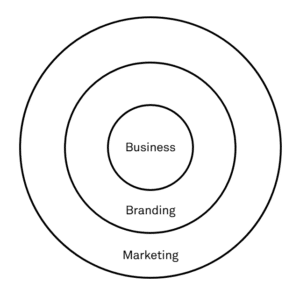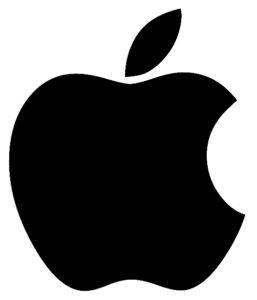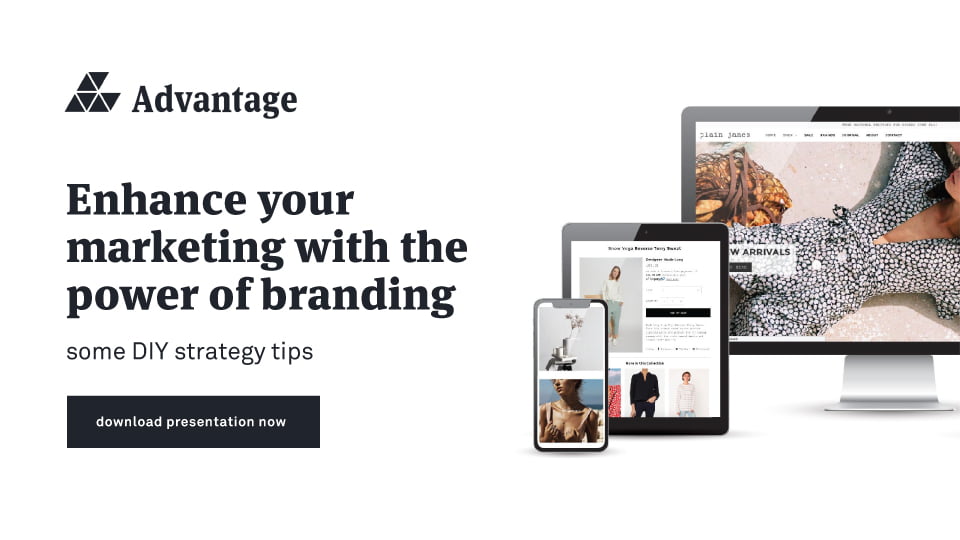The first step would be to consider what these words actually mean. Anyone, especially business owners will have at least a basic understanding or some preconceived ideas about these concepts. It helps to look back at the fundamentals. I think a lot of the confusion arises from the fact that marketing and branding have a huge amount of crossover, and the line continues to blur as time goes on. If they were layers, this is how it might look:
What Is Branding?
How long have you got? At its core branding may be somewhat straightforward, but in practice it is far-reaching and nuanced. We’ll stick with the basics for now. The best definition I have heard for branding is something like this: “branding is the what, why, who and how of a business and how it communicates with the world”. Branding is like a magnet. It’s what draws people to your business, makes it relatable, memorable, relevant and appealing. It’s what builds loyal customers. Branding is about defining your mission, your values, your audience, the way you communicate and the unique value you provide.
“Brand is just a perception, and perception will match reality over time.”
— Elon Musk, Co-Founder & CEO, SpaceX
Here are some common misconceptions about branding:
Branding Is Just My Logo or My Tagline
Your logo, visual identity, tagline as well as design collateral should be the output of your branding, but they are not branding in and of themselves. Branding is about pushing all designs and messaging through your brand filter, to ensure everything is coherent and authentic.
Branding Is Only for Big Businesses
I can empathise with this concept, and I agree that a fully-fledge branding service is seen as expensive. However, you are likely already branding your business, just maybe not with intention. A brand consultant does not tell you what your brand is, they simply listen and help you articulate the standouts and then put these into motion.
What Is Marketing?
Marketing is somewhat easier to understand, or at least seemingly more ubiquitous. Where branding is a “pull” based strategy, marketing is all about the “push”. Marketing is about getting the word out there in front of people and providing opportunities for customers to make a sale. Marketing says “buy our product because it’s the best”. (Or because it’s cool, or because everyone else has it, or because it will solve all your problems.) This is an oversimplification, but it gives you an indication of what marketing is.
Here are some common misconceptions about marketing:
“Marketing Doesn’t Work”
I may be biased in this matter, but this is just factually wrong. Marketing is one of the primary factors in the growth of any business. Without marketing, a business will reach a growth ceiling. The widely renowned “Godfather” of marketing, Seth Godin puts it like this: “In a busy marketplace, not standing out is the same as being invisible”. Because of the trial and error nature of marketing, if people quit when it doesn’t work then they are not giving it it’s full, required term.
“Marketing Is Expensive”
This idea comes from the mentality of marketing being a cost. Whilst this is technically true, successful business operators see marketing as an investment. You should be tracking the financial return of any direct marketing efforts and comparing them to the “cost” input. If the marketing is successful, then the former (return) should be many times greater than the latter (cost). Is something expensive if you’re actually making money from it?
“Marketing Is Too Pushy”
I feel you. No one wants to be sold to, and yet we are every single day. I think this quote about sums up my belief: “The best marketing doesn’t feel like marketing” Tom Fishburne. Marketing does not have to be sales-ey. Marketing can be about storytelling. Grab someone’s attention, give them free value or something interesting and you can make sales.
How Are Branding and Marketing Related, or Different?
Branding and marketing are so closely linked that it can be hard to differentiate. After listening to the world’s branding/marketing geniuses, you begin to understand the nuanced difference between the two. A good example as put forward by Seth Godin it is to think about a scenario where Nike opens up a hotel chain. People familiar with Nike (those who aren’t, have you been living under a rock?) could probably give you a good idea of how that hotel might operate This is because Nike has built a brand. If a business is only focussed on direct marketing, you would not have this same effect. Consider the reverse, if say, the Marriott began to make shoes. They’d probably be nice, high-quality shoes – but anyone can make nice shoes.
Some Key Considerations:
- Marketing can be measured, whereas it’s challenging to measure branding efforts
- Branding dictates the way in which you communicate through your marketing, but marketing does the communicating
- Marketing is what makes someone buy something from you in the first place, branding is what brings them back again
- Branding minimises resistance in your marketing efforts. It helps you determine your positioning
Which Comes First, Branding or Marketing?
The short answer is branding. Branding is bigger than any marketing campaign. It encapsulates your business and everything it does. It should underlie any of your marketing efforts, so that they are a true representation of your business. The more complicated answer is that the relationship between branding and marketing is cyclical. Branding is not “set and forget”, it should be dynamic and evolutionary where it is appropriate to do so. Marketing is a good testing system for branding, and your brand guidelines should be tweaked based on your marketing efforts.
Do You Define Your Brand Based On The Market, Or Based On Your Authentic Self?
The simple answer is both. You will find that if you are true to yourself that you will resonate with an audience that is attracted to this. If you choose to brand your business at contrast to your core values, and those of your business, you will find resistance at each step. We see examples where a business is exploitative and dishonest behind the scenes but markets themselves as “authentic” and “caring” and “quality”. These businesses are almost always uncovered.
With All This In Mind, See If You Can Answer The Following Questions:
Would the Subway logo and tagline be a good choice for a fine dining restaurant?
The word “cheap” may get you leads, but in what situation might it not be a good choice? Take this Google Ads copy for example:
A Quick Brand Marketing Case Study:
No talk about branding or marketing would be complete without looking at the most prime example of the success of implementing both effectively. I’m sure anyone could guess that I’m going to highlight Apple. Apple is one of the most successful companies in all of history, and experts unanimously agree that their execution of branding and marketing is key to this.
- In 2015, Apple spent $1.8 billion on advertising to make $233.7 billion (gross turnover)
- Apple challenged the computer industry starting in the 70s, followed by mobile devices with the release of the iPod and then the iPhone in 2007
- Apple has a strong focus on brand, designing their products around user experience and how people feel when using devices
I want to preface all of this by stating that “I do not own a single Apple product”. I’d like to think that I’m immune to Apple’s efforts, but from the outside and as an industry professional, I can truly see how well they have done.
When considering the branding vs marketing debate, the easiest distinction as it concerns Apple is this:
Branding is what you associate with Apple. It can explain the following:
- That feeling of “I want to fit in so I will buy an iPhone”
- The very naming structure of their products i- Phone, and what that represents
- The Apple fanbase’s loyalty, and the identity + sense of belonging that comes with being an owner of an Apple product
- The anger that Apple fans feel when someone mentions the devils name, Samsung
- The fact that Apple can charge a premium for technologically inferior products (in many ways)
Marketing is to account for:
- You buying an Apple product in the first place
- Being made aware of the latest models
- You seeing or hearing an advertisement for an Apple product, anywhere, everywhere
Even in the above there is a whole heap of crossover – not to mention it’s oversimplified. Branding is about giving you clarity, it’s almost the conduit between business and marketing. The way you communicate through your marketing strategies is defined in your brand. Branding does not explicitly sell, but it does improve the chance of you purchasing via marketing.
“To me, marketing is about values. This is a very complicated world, it’s a very noisy world. And we’re not going to get the chance to get people to remember much about us. No company is. So we have to be really clear on what we want them to know about us.” Steve Jobs
One caveat here to consider is that your business is not Apple. I understand that what Apple does may not work for you. They have budgets literally in the billions. What I do propose is that there is something to learn from companies like Apple, and that is that being intentional with business tools like branding and marketing can make a huge difference.
The Most Important Part, Why Should You Care About Marketing or Branding and What Can You Do About All This?
Once you open the cans that are branding and marketing, it can be daunting. Here are 10 things you can do, starting tomorrow to have a better chance at standing out in the competitive market through these services:
Some DIY Branding Tips
- Define your brand. Write down what your business is (as if someone was asking for the first time), why you are in business (don’t put “to make money”), who your business is for and how you will communicate with people. Be truthful. Spend time on this. Don’t be afraid to put something that sounds silly or ambitious.
- Write down your mission – what do you want to achieve with your business? What tangible impact would you like to make on the world?
- List out your business’s values and words you would like associated with your business. You can also put down a section for words you do not want to be associated with your business
- Define your audience/demographic and brand personas. This is who you actually want your clients to be, not just the clients that are currently doing business with you. Be specific. We’re talking name (hypothetical), age, gender, interests, family situation etc. The point of this is to run everything that you do through the question “how does this resonate with my target audience/s”?
- Determine why someone should choose you over a competitor. Write down your Value Propositions (the unique value you provide – what problems are you solving) and points of difference. Be clear about these. If you don’t have any, you need to come up with some!
With these items define, you can then run everything you do through them as filters. For example, you might ask yourself:
Is this project bringing us closer to our mission?
Is this logo appealing to our target audience?
Does our messaging resonate with our core values?
Are we addressing the problems people face when considering our product or service?
Do we have strong enough factors differentiating ourselves from competitors?
The Importance of Consistency in your branding & marketing efforts
- Branding is about strongly and consistently communicating the elements in your branding document
- Branding is about psychology – it is considerate to the subconscious, awareness, perception, feelings and memory
- Ensure you are working from at least a basic branding guide. This dictates colours, fonts, logo usage, even tonality
Some DIY Marketing Tips
- Using the information above, begin to put together the bones of a marketing plan. Decide who you are targeting and think about the best way to reach them. Use Google to pull market research if you’re not sure (e.g. simply search on Google “best way to market to 40-year-old women)
- Come up with a marketing budget. Even if you aren’t paying someone to manage your marketing, there are always costs involved in advertising. A rule of thumb is that marketing generally should cost 8 – 12% of your gross revenue. This is not dead money, marketing done right is all about multiplying your money
- Make sure you have a website, and make sure it’s good. If you don’t and don’t want to spare the funds, look into Squarespace, Wix or Shopify. Your website is the centre point of your marketing efforts
- These days there is a lot of marketing you can do DIY. Apple did not grow to where it is today through DIY marketing alone, but that’s likely where they started. There is so much research, tips and tricks and the like out there if you have the inclination. Make sure you have social media accounts for your business (even if you don’t use them, although better if you do!). Think about content, a blog is an easy one, or video
- Focus on quality, not quantity. Don’t feel that you need to push something out daily. Better that you did weekly and spent the time to ensure it looks good and has the right message
Have a look at our DIY SEO tricks ebook if you’re looking to get hands-on with your website and Google ranking.
Branding and marketing are not instant. You don’t implement a comprehensive strategy in either realm and then see riches the next week. Not starting now is only delaying the inevitable. With the above tips you are well on your way to understanding how to stand out in the world, to stand the test of time. Businesses who don’t market get left behind. Businesses who don’t brand are forgotten. Branding and marketing are tools to achieve your business goals.












